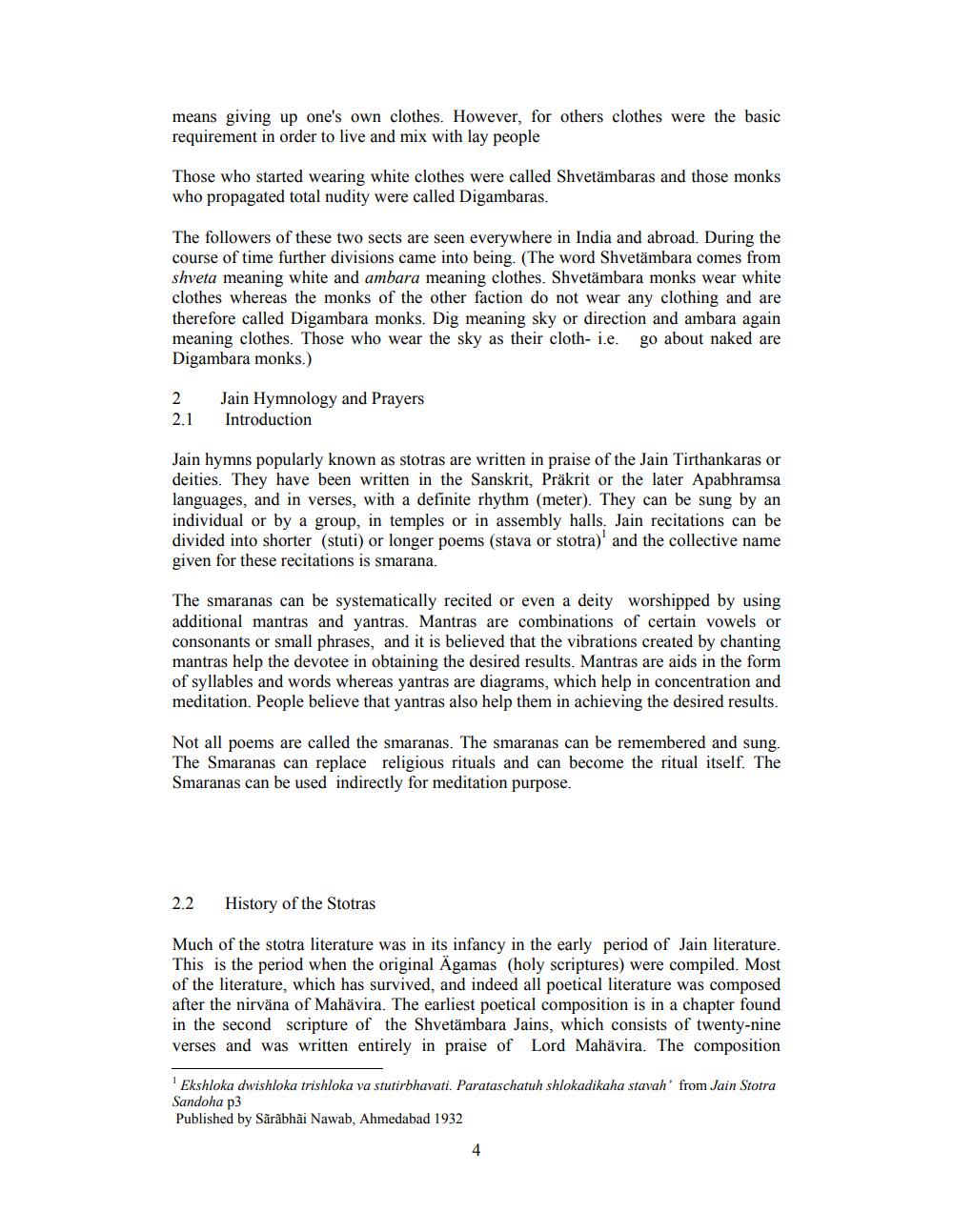Book Title: Nav Smarana Author(s): Vinod Kapashi Publisher: Vinod Kapashi View full book textPage 4
________________ means giving up one's own clothes. However, for others clothes were the basic requirement in order to live and mix with lay people Those who started wearing white clothes were called Shvetämbaras and those monks who propagated total nudity were called Digambaras. The followers of these two sects are seen everywhere in India and abroad. During the course of time further divisions came into being. (The word Shvetämbara comes from shveta meaning white and ambara meaning clothes. Shvetämbara monks wear white clothes whereas the monks of the other faction do not wear any clothing and are therefore called Digambara monks. Dig meaning sky or direction and ambara again meaning clothes. Those who wear the sky as their cloth- i.e. go about naked are Digambara monks.) 2 2.1 Jain Hymnology and Prayers Introduction Jain hymns popularly known as stotras are written in praise of the Jain Tirthankaras or deities. They have been written in the Sanskrit, Prakrit or the later Apabhramsa languages, and in verses, with a definite rhythm (meter). They can be sung by an individual or by a group, in temples or in assembly halls. Jain recitations can be divided into shorter (stuti) or longer poems (stava or stotra)' and the collective name given for these recitations is smarana. The smaranas can be systematically recited or even a deity worshipped by using additional mantras and yantras. Mantras are combinations of certain vowels or consonants or small phrases, and it is believed that the vibrations created by chanting mantras help the devotee in obtaining the desired results. Mantras are aids in the form of syllables and words whereas yantras are diagrams, which help in concentration and meditation. People believe that yantras also help them in achieving the desired results. Not all poems are called the smaranas. The smaranas can be remembered and sung. The Smaranas can replace religious rituals and can become the ritual itself. The Smaranas can be used indirectly for meditation purpose. 2.2 History of the Stotras Much of the stotra literature was in its infancy in the early period of Jain literature. This is the period when the original Ägamas (holy scriptures) were compiled. Most of the literature, which has survived, and indeed all poetical literature was composed after the nirväna of Mahävira. The earliest poetical composition is in a chapter found in the second scripture of the Shvetämbara Jains, which consists of twenty-nine verses and was written entirely in praise of Lord Mahävira. The composition Ekshloka dwishloka trishloka va stutirbhavati. Parataschatuh shlokadikaha stavah' from Jain Stotra Sandoha p3 Published by Sărăbhai Nawab, Ahmedabad 1932Page Navigation
1 2 3 4 5 6 7 8 9 10 11 12 13 14 15 16 17 18 19 20 21 22 23 24 25 26 27 28 29 30 31 32 33 34 35 36 37 38 39 40 41 42 ... 224
